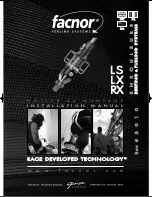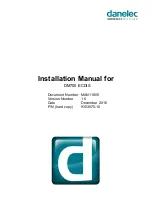
®
Ballistic Pendulum Accessory
Experiment 2: Conservation of Momentum and Energy
14
012-09842C
3.
Compare the kinetic energy of the ball before the collision to the kinetic energy
of the pendulum-ball system just after the collision. Was energy conserved in the
collision?
4.
What was the gain in potential energy of the pendulum (not including the ball)?
What was the purpose of the counterweight?
5.
Compare the kinetic energy of the pendulum-ball system just after the collision to
the gain in potential energy of the ball. Was energy conserved as the pendulum
swung after the collision?
Further Study I: Different Launch Speeds
Repeat the experiment for the slow and medium launch speeds. How does changing
the launch speed affect how well momentum is conserved?
Look at the ratio of initial kinetic energy (of just the ball) to the kinetic energy of the
pendulum-ball system (just after the collision). How does the launch speed of the ball
affect this ratio?
Further Study II: Different Projectile Mass
Repeat the experiment with the lower-mass nylon ball (included with the launcher), or
one of the balls from the Spherical Mass Set (ME-8968).
Further Study III: Different Center of Mass
Repeat the experiment without the counterweight. This time, you will need to find the
center of mass of the pendulum-ball system (see Experiment 1). Measure the distance
(
r
) from the axis of the RMS to the center of mass. When you calculate the potential
energy gain of the system, the height (
h
) is the change in height of the center of mass
of the system, not the ball.
Further Study IV: Elastic Collision
Examine the difference between catching the ball (completely inelastic collision) and
allowing the ball to hit the bumper on the back of the catcher:
1.
Place the counter-weight on the lower half of the pendulum rod between the mid-
dle hole and the catcher. Fasten the pendulum to the RMS using the middle hole
with the bumper side towards the launcher. There should be a gap of a few centi-
meters between the end of the launcher and the bumper.
2.
Launch the ball at its slowest speed. What happens to the ball when it hits the
rubber bumper on the catcher? Adjust the position of the counter weight so that
the ball drops
straight down
after the collision. If the counterweight is positioned
too low, the ball bounces backwards. If the counterweight is too high, the ball
still has some forward velocity. You want the horizontal velocity of the ball to be
zero after the collision.
3.
Perform the experiment as before and measure the maximum displacement
(
max
) and initial angular velocity (
0
) of the pendulum.
4.
Measure the rotational inertia of the pendulum
without
the ball.
Find the pendulum’s center of mass (without the ball). Measure the distance
r
from the axis of the RMS to the center of mass.



































